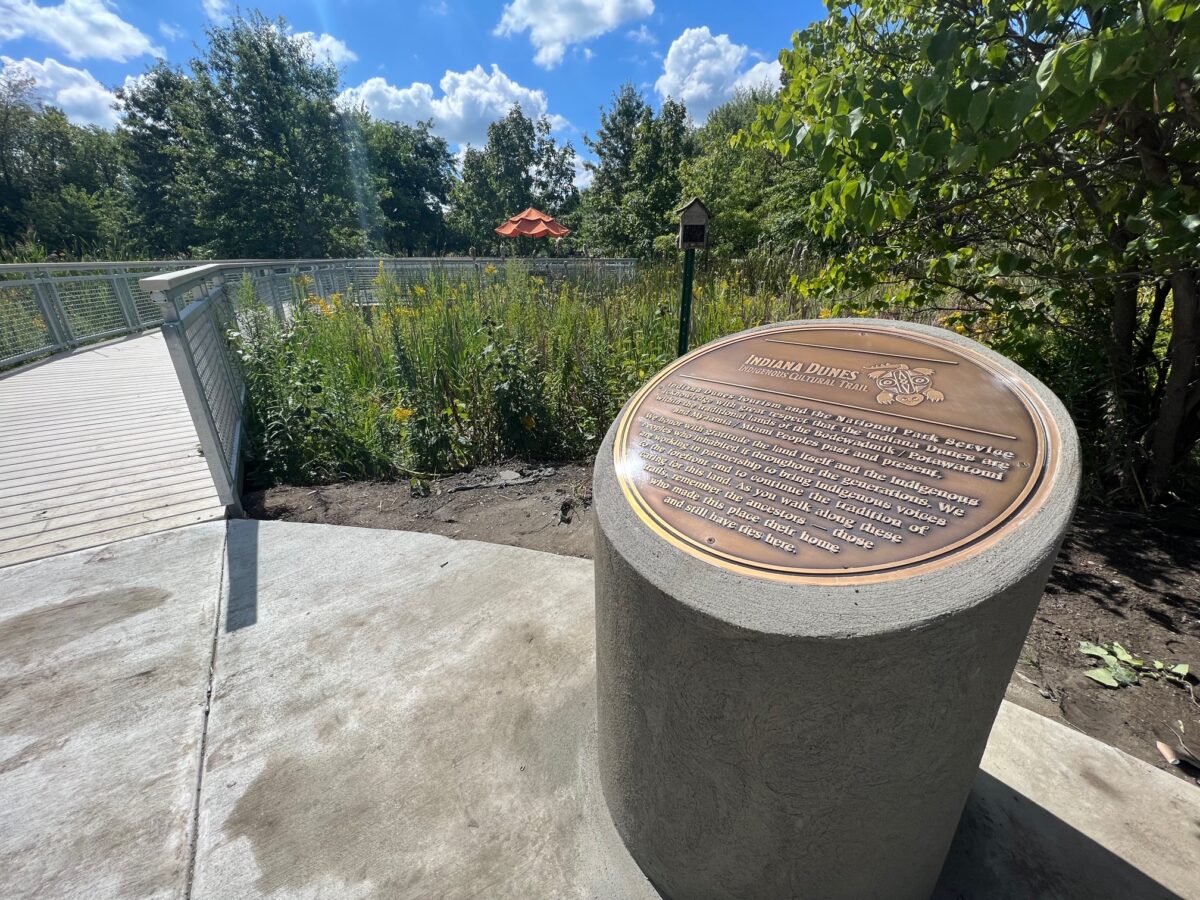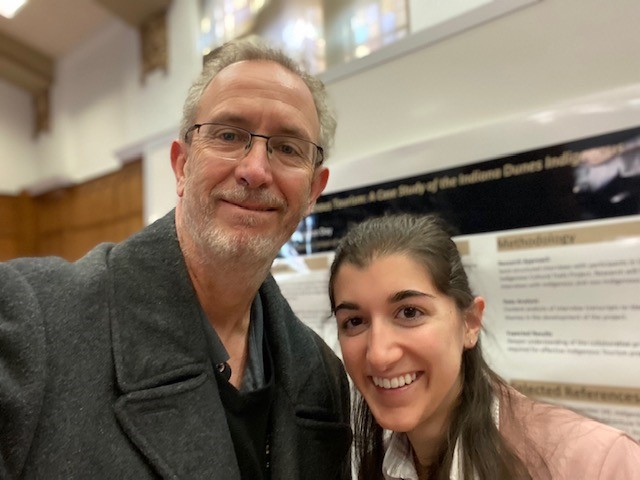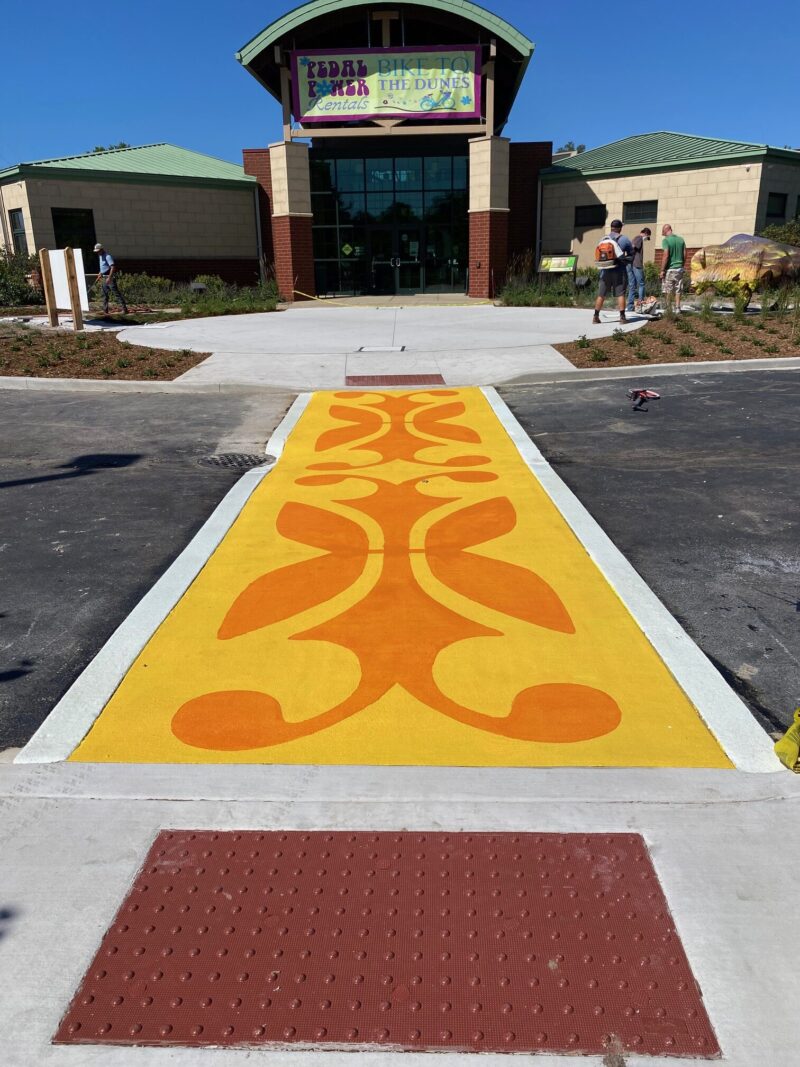Purdue HTM researchers: Authentic indigenous tourism a tremendous opportunity for sustainable tourism, if done right

The Indiana Dunes National Park’s Indigenous Cultural Trail is well on its way to a fall 2024 opening.Photo provided
Written by: Tim Brouk, tbrouk@purdue.edu
In his work, Jonathon Day, associate professor in the Purdue University White Lodging-J.W. Marriott, Jr. School of Hospitality and Tourism Management (HTM), has found areas around the world that need improvement on their sustainability practices, whether its economic or environmental. But sometimes destinations get it right, and Day and his students did not need to travel far to find a prime example of sustainable tourism.
Day’s research focuses on optimal tourism sustainability, which occurs when the destination “contributes positively to society and individual well-being.” One way the destination can be sustainable is when it contributes to the economic well-being of its surrounding community.

Jonathan Day, associate professor in the Purdue University White Lodging-J.W. Marriott, Jr. School of Hospitality and Tourism Management, and senior Libby Loprete pose for a selfie in front of their indigenous tourism research poster.Photo provided
For more than a year, Day and Libby Loprete, a senior in HTM, followed the development of the new Indiana Dunes Indigenous Cultural Trail in Indiana Dunes State Park near Chesterton, Indiana, about 90 minutes from Purdue’s West Lafayette campus. The Indiana Dunes has been a tourism spot for generations, but there is much more to the park than its beaches along the southern tip of Lake Michigan. The trail pulls visitors into the wooded area of the park and closer to the region’s restaurants, shops and other attractions.
“They’re protecting the environment, learning about the culture of the region and making sure the money is staying in the community,” Day said. “It will be benefits and benefits as it goes.”
The Indigenous Cultural Trail is taking shape, readying for a potential fall 2024 opening. Loprete will finish her research project on the attraction in December, and after a peer review, the research will appear in a spring 2024 issue of Tourism Cases, a journal for tourism academics and industry leaders.
Acknowledging the past, collaborating in the present
While researching, Loprete and Day focused on how indigenous tourism is being presented in the United States. The researchers noted that successful indigenous tourist destinations acknowledge the past. For most of the country, this includes despicable treatment of Native Americans in past centuries. Men, women and children were forced to move or were even murdered for their land. Between West Lafayette and the Indiana Dunes once lived the Potawatomi, Miami, Wea and Kickapoo tribes, according to state government text and maps.
Indiana Dunes leadership made sure to work with the descendants of the Miami and Potawatomi people. The Miami Tribe of Oklahoma and the Pokagon Band of Potawatomi were consulted throughout the trail’s development.
“They have taken time to really understand what’s important to the tribes that were there,” Day explained. “They have learned together and grown together, and one of the nice outcomes of this is the trail itself, which is a great example of how tourism can protect and elevate our understanding of culture.
“Certainly, the Dunes has been a place people have enjoyed for years and years and years. What they have been able to do is add a new dimension of understanding to it.”
On the trail’s websites and in press releases, there was early and clear acknowledgement of the removal of the Potawatami about 200 years ago and the moving of Miami people to Kansas in the 1840s.
The Purdue researchers also noted the many historical markers and information signs and displays recently installed along the trail that introduce visitors to the indigenous culture. Indigenous plants and animal names are highlighted, and a mural art walk is contained within the trail too.
‘Like You Mean It’

The Indiana Dunes Indigenous Cultural Trail begins and ends at the park’s visitor’s center.Photo provided
The Indiana Dunes has been on Day’s radar since it launched its sustainable tourism campaign “Love the Indiana Dunes Like You Mean It” several years ago. The initiative is a rallying cry for the whole park, including the Indigenous Cultural Trail, and it coincides with the Indiana
Dunes gaining national park status in 2019, which increased its annual visitor numbers from about 70,000 to about 200,000.
“Once we became a national park, one of the things we noticed was that the visitor changed a little bit. Previously, we had a lot of beachgoers. ‘Let’s go to the beach for a day.’ Now, we have people who are really interested in history of the area, the natural resource itself,” said Christine Livingston, vice president and marketing director of the park. “There’s also the ‘bucket list’ people that visit every national park and are really interested in doing a deep dive on the history and indigenous culture of the Indiana Dunes.”
Sustainability and honoring indigenous people were part of the trail’s inception about six years ago.
“It’s our responsibility to market it in such a way that it cultivates an honoring of that space and honoring those resources and not degrading them and being respectful of them. Having a sustainable component in the way we market them is just integral,” Livingston explained. “It’s really evolved over time into this meaningful way to communicate indigenous stories from the Indiana Dunes area that are either mistold, under-told or just not told at all.”
The first phase of the trail will be a 5-acre loop that starts and ends at the park’s visitor center. The project was funded by $500,000 in grant money. Livingston and her staff are aiming for more funds to eventually expand the trail by 15 more acres.
In Indiana and beyond, other Indigenous tourism attractions are following similar paths as the Indiana Dunes. History and cultural interest are balanced with honor and respect at sites such as Fort Ouiatenon in West Lafayette, the Eiteljorg Museum in Indianapolis and Cahokia Mounds in Illinois.
“Indigenous tourism is going through a renaissance all around the country,” Day said. “We’re seeing groups that really appreciate the cultural authenticity that they’re trying to convey. They’re telling their story through tourism experiences. The Cultural Trail is a great example of one that’s done right.”
The other side of American history
For a young researcher from the Boston area, Loprete studied the Boston Tea Party and other American Revolution sites throughout her schooling. When she signed up for the Indigenous Cultural Trail research project as a Purdue undergraduate, she learned about Midwest indigenous people. During her trips from West Lafayette to the Indiana Dunes, she saw vast stretches of farmland and houses spread far apart. Seeing the land put more appreciation of her research opportunity as well as the extra lengths the Indiana Dunes State Park leadership put into establishing the Indigenous Cultural Trail.
“It’s going to be exciting to see their success and their numbers being hit and going up, getting more exposure,” Loprete said. “I think a big part of this is that community healing from the past, and where we were 100-plus years ago to where we are today is going to be great to see come together through tourism.”
Now in research writing mode, Loprete is thrilled for the opportunity of becoming a published researcher before her May graduation.
“To be able to have that achievement of being a published author is going to be a unique characteristic before going into the tourism industry,” Loprete said. “Not everyone can say that.”
Purdue’s White Lodging-J.W. Marriott, Jr. School of Hospitality and Tourism Management offers four undergraduate majors and three graduate programs, including the top-ranked online MS in Hospitality Management and Tourism program.
Discover more from News | College of Health and Human Sciences
Subscribe to get the latest posts sent to your email.